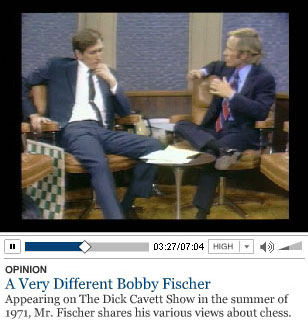Linares 2009; Round 5; 24.02.2009
1. d4 d5 2. c4 c6 3. Nf3 Nf6 4. Nc3 dxc4 5. a4 Bf5 6. e3 e6 7. Bxc4 Bb4 8. O-O O-O 9. Qe2 Nbd7 10. e4 Bg6 11. Bd3 Bh5 12. e5 Nd5 13. Nxd5 cxd5 14. Qe3 Re8 15. Ne1 Bg6 16. Bxg6 hxg6 17. Nd3 Qb6 18. Nxb4 Qxb4 19. b3 Rac8 20. Ba3 Qc3 21. Rac1 Qxe3 22. fxe3 f6 23. Bd6 a5 24.Bc7 fxe5 25. dxe5 b6 26.Rc3 Rf8 27. Rfc1 Rf5 28. g4 Rf7 29. Bd6 Nc5 30. Bxc5 bxc5 31. Rxc5 Rcf8 32. Rxa5 Rf3 33. Ra7 g5 34. Re1 d4 35. exd4 Rxb3 36. Rf1 Rd3 37. Rxf8+ Kxf8 38. a5 Rxd4 39. h3 Kg8 40. a6 Ra4 41. Kf2 Ra5 42. Kf3 Rxe5 43. Re7 Kh7 44. Re8 Ra5 45. Rxe6 Ra3+ 46. Ke4 Rxh3 47. Kd5 Rc3 brings us to a critical position;
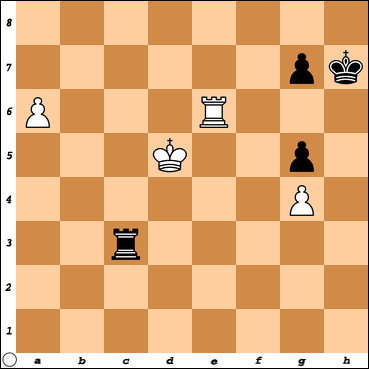
White continued with 48.Rb6? and missed the opportunity; the game continued with 48...g6 49. Kd6 Kh6 50. Rb8 Ra3 51. Ra8 Kg7 52. Kc5 Ra1 53. Kb6 Rb1+ 54. Ka7 Rb4 55. Rb8 Rxg4 56. Rb5 Ra4 57. Rxg5 Rb4 58. Rc5 Kh6 59. Rc6 Kh5 60. Rb6 Rf4 61. Rb5+ g5 62. Kb6 Rf6+ 63. Ka5 Rf7 64. Kb6 Rf6+ 65. Ka5 1/2-1/2
I believed that I had found a winning move for White but I first wanted to check it with Fritz. I loaded Fritz 10 for Windows on what I had available - an old IBM Z60m notebook with a 1.73 GHz Intel Pentium M processor and 500 megabytes RAM. I decided to go for the Shootout mode in which Fritz plays itself. I optimized its strength and gave it 20 minutes plus a 5 second increment which should be plenty of time for a position with minimal pieces.
Fritz set to resign early and draw late:
New game - Fritz 10
Shootout (Fritz 10, Blitz:20'+5")
New game - Fritz 10
Shootout (Fritz 10, Blitz:20'+5")
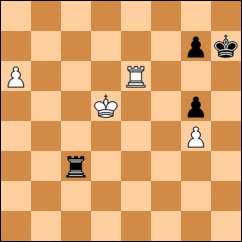
48.Rc6! 3.32/19 53 48...Rg3 3.24/22 1:30 49.a7 3.24/20 24 49...Ra3 1.82/22 51 50.Rc7 1.82/22 1:01 50...Kh6 0.00/22 1:36 51.Kd6 0.00/22 1:04 51...g6 0.00/22 43 52.Kc6 0.00/21 40 52...Rc3+ 0.00/20 35 53.Kb6 0.00/22 1:12 53...Rb3+ 0.00/22 38 54.Ka5 0.00/22 36 54...Ra3+ 0.00/22 1:28 55.Kb6 0.00/24 35 55...Rb3+ 0.00/24 1:00 56.Kc6 0.00/23 51 56...Rc3+ 0.00/23 1:08 57.Kb5 0.00/21 48 57...Rb3+ 0.00/21 36 58.Kc5 0.00/21 47 58...Rc3+ 0.00/19 26 59.Kd6 0.00/23 46 59...Ra3 0.00/21 43 60.Kd7 0.00/21 32 60...Ra2 0.00/21 46 61.Rb7 0.00/21 29 61...Ra1 0.00/20 21 62.Kc8 0.00/22 43 62...Rxa7 0.00/23 37 63.Rxa7 0.00/24 25 ½–½
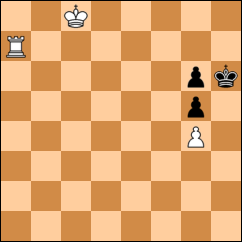
Fritz did not find a win in play against itself so I decided to challenge Fritz directly. If the position is really drawn, he should be able to demonstrate it against any opposition.
Fritz set to resign late and draw early
Gitananda, Rama - Fritz 10
Blitz:20'+5" Phoenix, AZ, 24.02.2009
Gitananda, Rama - Fritz 10
Blitz:20'+5" Phoenix, AZ, 24.02.2009

48.Rc6! 48...Ra3 2.01/9 1:05 49.Kd6!! This move is the only move I know of that insures the win - White aims for b7 - his rook will only go to c7 to block a check by Black on the 7th rank - otherwise Black can play for stalemate as Fritz has already demonstrated. 49...Ra1 2.18/8 39 50.Kc7 Ra4 3.25/13 1:21 51.Kb7 Rxg4 3.35/14 40 52.a7 Ra4 3.68/20 0 53.Ra6! With this move White forces Black to check twice in order to reach the 8th rank - those two checks bring the White king closer to the g file. 53...Rb4+ 4.02/20 1:36 54.Kc6 Rc4+ 5.50/19 28 55.Kd5 Rc8 6.12/21 1:23 56.a8Q Rxa8 6.50/22 13 57.Rxa8 Kg6 6.81/21 45 58.Ke4 g4 6.94/18 32 59.Kf4 g3 8.31/18 55 60.Kxg3 1–0
final position - Fritz resigns
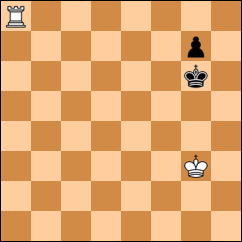
In this line Black put up stiffer resistance:
position after 47... Rc3


Fritz set to resign late and draw early
Gitananda, Rama - Fritz 10
Blitz:20'+5" Phoenix, AZ, 24.02.2009
Gitananda, Rama - Fritz 10
Blitz:20'+5" Phoenix, AZ, 24.02.2009

48.Rc6! Rg3 2.92/21 53 49.Kd6!! This move is the only move I know of that insures the win - White aims for b7 - his rook will only go to c7 to block a check by Black on the 7th rank - otherwise Black can play for stalemate as Fritz has already demonstrated. 49...Rxg4 2.67/21 43 50.Kc7 g6? 2.71/21 1:16 stronger is 50...Rb4+! 51.Rb6...Ra4 52.a7...Rxa7 53.Kxa7 and White must lose a tempo clearing his rook from the a7-h2 diagonal 51.a7 Ra4 3.18/22 37 52.Kb7 Rxa7+ (or else 53.Ra6! wins faster) 3.21/21 49 53.Kxa7 g4 5.50/20 1:03 54.Rc4 g5 6.12/20 55 55.Kb6 Kg6 6.31/21 33 56.Rxg4 Kf5 6.37/25 22 57.Rg1 g4 6.37/23 1:15 58.Kc5 Kf4 7.94/24 1:15 59.Kd4 Kf3 9.00/19 45 60.Kd3 g3 9.00/20 55 61.Rf1+! if now 61...Kg2 then 62.Rf7!...Kh2 63.Ke2...g2 64.Rh7+...Kg3 65.Rg7+...Kh2 66.Kf2 and wins 61...Kg4 12.59/19 53 62.Ke3 g2 if instead 62...Kh3 then 63.Kf3...Kh2 64.Re1!...g2 65.Kf2 and wins 8.87/17 19 63.Rg1 Kg3 9.00/17 23 64.Ke2! 1-0
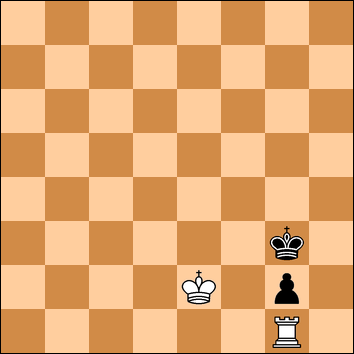
Annotations by GM Dorian Rogozenco
http://www.chessbase.com/newsdetail.asp?newsid=5239
Video Commentary by Grandmaster Larry Christiansen
http://webcast.chessclub.com/Linares09/Round5/GOTD.html
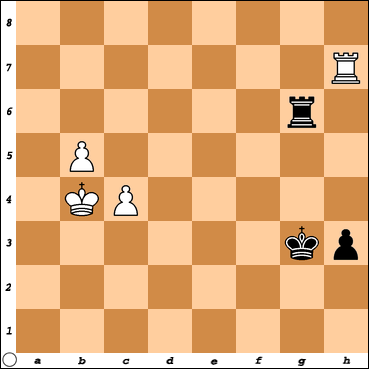
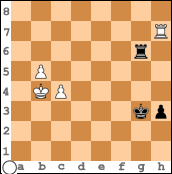
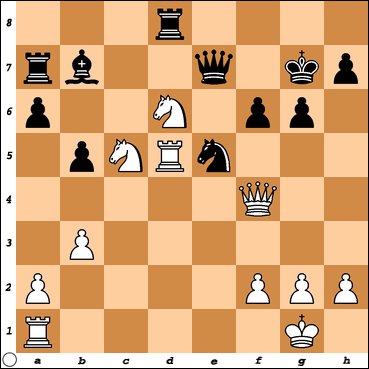

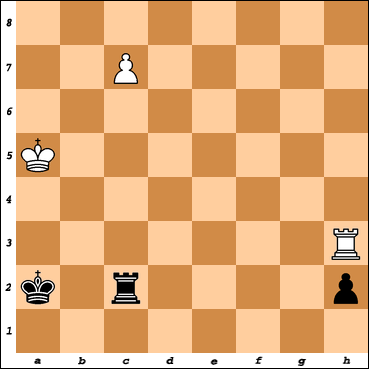 ..
..